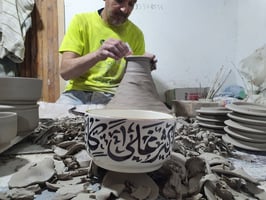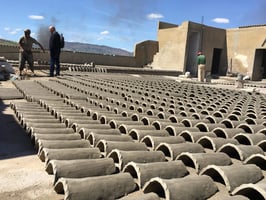Moroccan leather goods are renowned for their quality, durability, and timeless style. At...
The craftsmanship of Moroccan leather goods
Moroccan leather goods are renowned for their quality and craftsmanship, reflecting centuries of tradition. From tanneries to finished products, let’s explore the journey of Moroccan leather.
The Tanning Process
1. Traditional Tanning Methods: Moroccan tanneries, particularly in Fez, use age-old methods to prepare leather. Hides are soaked in natural solutions, then treated with plant-based dyes and oils. This process not only preserves the leather but also enhances its durability and texture.
2. Natural Dyeing: Using natural dyes from plants and minerals, Moroccan leather is colored in vibrant hues. These eco-friendly dyes ensure that each piece of leather is unique and free from harmful chemicals.
Crafting Leather Goods
1. Handcrafting Techniques: Artisans employ techniques such as embossing, stitching, and carving to create intricate designs on leather. These skills are often passed down through generations, ensuring a high level of craftsmanship.
2. Product Range: Moroccan leather goods include a variety of items such as bags, shoes, belts, and poufs. Each product is handmade, reflecting the artisan’s expertise and attention to detail.
Cultural and Economic Impact
Leather crafting is a vital part of Morocco’s economy and cultural heritage. It provides livelihoods for thousands of families and maintains traditional skills. Moroccan leather goods are also a symbol of cultural pride, representing the country’s artisanal excellence.
Sustainability in Leather Crafting
Modern Moroccan artisans are increasingly adopting sustainable practices. By using natural dyes and eco-friendly tanning methods, they ensure that their craft is both environmentally responsible and rooted in tradition.
Moroccan leather goods stand out for their quality, durability, and intricate designs. By choosing these handcrafted items, you support traditional artisans and contribute to the preservation of a rich cultural heritage.
-2.gif?width=80&height=80&name=Mf%20(1)-2.gif)


